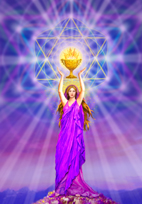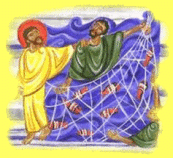 Art by Marius Fine Art
Art by Marius Fine Art
This is Part II – catch up with Part I here (I’ve corrected the dates as well and added the Age of Leo).
The Age of Aries (1,662 BCE – 498 CE) was the Age of the Hero and the Warrior. The eruption of the volcano Santorini in 1680 destroyed the Minoan civilization and along with it their Bull cult (age of Taurus). This age was marked synchronistically by the Indo-Aryan (Aries) migration and the beginnings of cattle domestication (conquering the Bull god). Rituals of the Mithraic cult involved slaughtering of bulls, which has come down to us today as the bullfight. The gods of the Age of Aries, as in each age before them, eradicated the gods that preceded them.
Little is known about the origins of the Aryan people, but they were warriors possessing military technology superior to that of their neighbors, facilitating their takeover of much of Asia during this period. The Arien Age also witnessed the first Olympic games in Greece and the development of the Greek and Roman empire. The Hero archetype was central to the Greek and Roman cultures, with their gods who were constantly doing battle. Yahweh, the god of the Jewish people who gained prevalence during this time, combined characteristics of both the Warrior and the Hero. He demanded the transformation of the Hero in his disciple Abraham, and advised on military conquests.
Finally our own Age of Pisces (498 – 2,658 CE ), symbolized by the Fish, and representing the Sacred descending to the Mundane world. Pisces rules universal compassion, sacrifice of the individual Ego, and martyrdom. Pisces is a feminine sign, yet during the reign of Pisces we have seen the suppression and re-emergence of the feminine, and no story tells this quite as dramatically as the transformation of Mary Magdalene, the real story behind The DaVinci Code. The Church recently admitted that Mary Magdalene was not a prostitute but a true follower. However, when the Nag Hammadi scrolls were discovered and translated, it was revealed that Mary was more than a follower but an actual apostle, giving rise anew to theories of Mary having been wife to Jesus.
The story of the life and death of Jesus the Christ and the evolution of the religion that bears his name mirrors the Piscean age perfectly. Pisces is sign of the water element, and the origin of Christianity finds Jesus being baptized in a river, symbolizing the dissolution of the personal ego into the river of faith, a ritual that continues today. Even in pre-Christian times, the sacred wells of the British Isles were places where the gods and goddesses would be present. The teachings of Jesus express the Piscean values of compassion, universal love and brotherhood. However, last 2000 years have not always expressed those concepts in their highest form.
The call for the end of individualism and the necessity for blind belief that marks the evolution of the Piscean age has led to the more negative manifestation of Pisces: illusion and delusion. The famed Dark Ages in western civilization occurred because the ruling Roman Catholic Church wanted to suppress all knowledge and keep their adherents in the literal darkness. At that time the realm of knowledge spread to the Arab world, which is now in its own Dark Age.
The date for the end of the Piscean age is in much dispute. As earlier discussed, most would like the Ages to fit into a nice 2000 year package which would put us squarely in the beginning of the Aquarian age. However, astronomical calculations tell us that this is not true, and that the Aquarian age technically will not begin until approximately 2600 CE. Regardless, we are in the last decan of Pisces and moving away from the Pisces influence of sacrifice of the individual ego. As the Piscean mists begin to separate, the knowledge and understanding that Aquarius demands is beginning to make itself known.
The religion of Christianity is built around the death and resurrection of Jesus, yet for 2000 years that very tenet has been in doubt. The four gospels each tell a completely different story of the end of the life of Jesus, and there are no details of the resurrection. As with much of the Christian story (and I mean no offence to Christians here), the story of the resurrection must be taken on faith. There are some questions as to whether Jesus even died on the cross – a mysterious individual named Simon the Cyrene offered to carry Jesus’s cross, and some theorize that it was Simon that actually died on the cross and not Jesus. Others question whether the “vinegar and gall” given to Jesus wasn’t snake venom that caused him to fall into a swoon, thereby fooling the Romans into thinking he had died when in fact he was in a deep unconscious state. Pontius Pilate “marvelled if he were already dead” and changed the established procedure of leaving him on the cross to be eaten by carrion, but instead authorized that his body be brought down to leave in his tomb. Many believe that Jesus and Mary were then spirited out of Jerusalem and taken to Europe where they lived happily ever after.
For centuries these ideas were suppressed and their adherents tortured and murdered for heresy, but in the 20th century these ideas began to spring forth anew such as the book Holy Blood and Holy Grail. First published in 1982, this book was a cult classic until the Dan Brown’s novel “The Da Vinci Code” appeared on the scene. Evidently the collective consciousness is now ready to absorb these ideas and begin to examine the truth that lies behind the faith.
As we enter the Aquarian Age, what will our new gods be? Aquarius rules technology and radical thought, invention and ascension. The last Aquarian age (around 28,000 BC) marked the end of the Neanderthal and the birth of Cro Magnon man. Will our species be similarly transformed over the next 2500 years? We can try to predict the future, but life has a way of evolving in a way that we cannot imagine.

